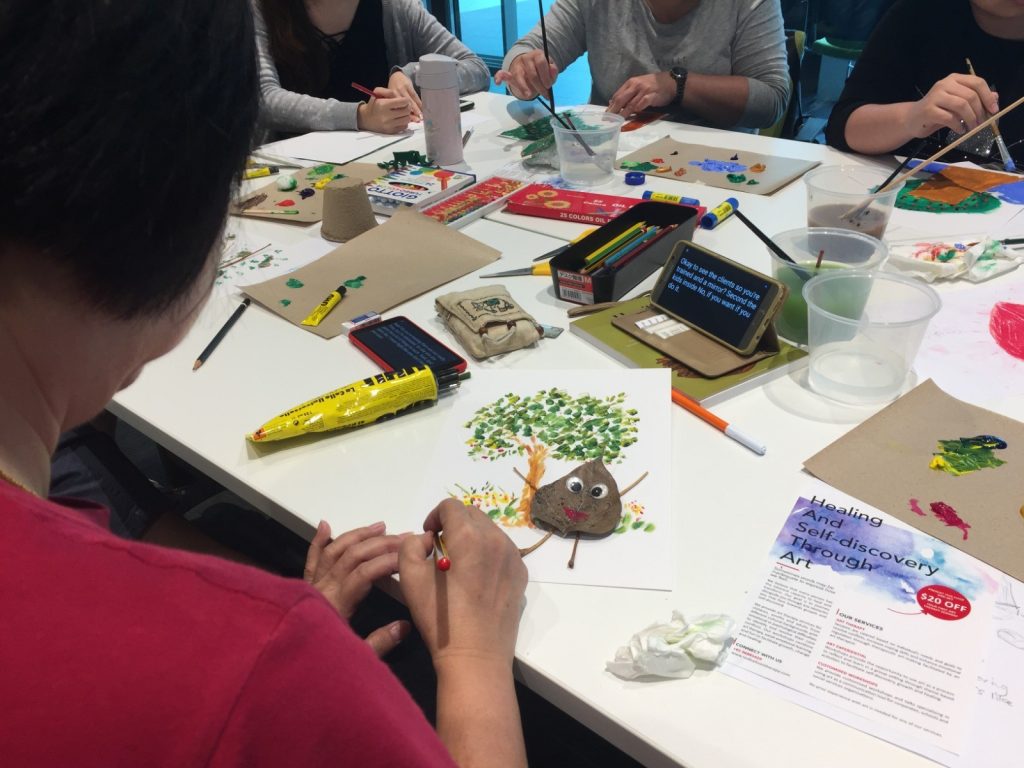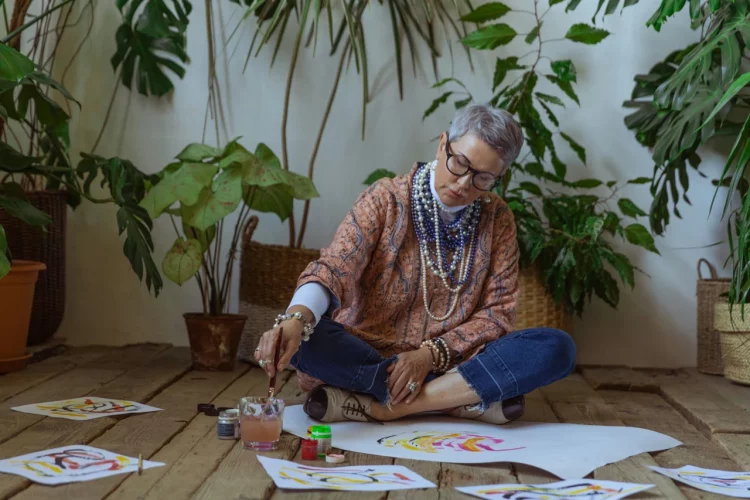In a world increasingly burdened by stress, anxiety, and mental health challenges, the need for accessible and non-stigmatizing avenues of emotional expression has never been greater. Traditional talk therapy, while effective, is not always the best fit for everyone. Language can be limiting, trauma can silence voices, and cultural norms may discourage open discussion of mental health struggles. In this context, art therapy has emerged as a powerful alternative—one that taps into the universal human drive to create. Community-based art therapy workshops, in particular, have gained traction as inclusive spaces where individuals can explore their emotions, build resilience, and foster connection. These workshops transcend the role of mere creative pastimes; they are carefully guided therapeutic interventions rooted in psychology, empathy, and the healing power of expression.
Understanding Art Therapy and Its Foundations
Art therapy is a form of expressive therapy that integrates psychotherapeutic techniques with the creative process to improve mental well-being. Rooted in the belief that artistic expression can foster healing and mental health, it involves activities like painting, drawing, sculpting, collage-making, and more. Participants do not need to have any artistic talent; rather, the emphasis is on the process, not the product. Under the guidance of trained art therapists, individuals are encouraged to externalize their internal experiences through visual media. This can reveal emotions that are difficult to articulate verbally, facilitate self-reflection, and offer a safe container for unresolved trauma. Community art therapy workshops extend these benefits beyond individual therapy sessions and into shared spaces—schools, community centers, clinics, shelters—where people of all backgrounds and experiences can come together and heal collectively.
Breaking Down Barriers Through Creative Access
One of the most profound strengths of community art therapy is its accessibility. While mental health care often faces barriers such as cost, stigma, language, and availability, art therapy workshops remove many of these obstacles. These programs are frequently offered free of charge or at low cost, sponsored by nonprofits, public health agencies, or grassroots initiatives. They can be held in familiar, non-intimidating settings like libraries, churches, or community halls, which helps reduce the psychological barriers to participation. Moreover, for people who feel uncomfortable speaking about their emotions—due to cultural taboos, trauma, or neurodivergent communication styles—art provides an alternative channel. Participants can “speak” through color, form, and imagery, often revealing layers of their experience that words fail to capture. In group settings, these expressions are witnessed, validated, and honored, which further enhances their therapeutic impact.
Art Therapy for Trauma and Emotional Recovery
Art therapy has proven especially effective for individuals recovering from trauma, including survivors of abuse, refugees, veterans, and those affected by natural disasters or systemic violence. Trauma often lives in the body and bypasses language, making traditional cognitive approaches less effective. Through visual expression, individuals can process painful experiences without being re-traumatized by the need to verbally recount them. For example, a survivor of domestic violence may depict a fractured image that symbolizes feelings of fear and fragmentation, while a refugee child might draw memories of home alongside images of their new environment—bridging past and present. In these workshops, the art becomes a narrative, a witness, and a path forward. Trained facilitators are skilled in helping participants interpret their creations, make meaning from them, and begin the journey of integration and healing.
Building Connection and Reducing Isolation
Mental health struggles are often compounded by isolation. Feelings of loneliness, shame, and social withdrawal can worsen symptoms of depression and anxiety. Community-based art therapy offers a crucial antidote to this cycle. By bringing people together in a creative and supportive environment, these workshops foster social connection, empathy, and mutual support. Participants work side by side, often sharing stories and experiences organically as they paint, sketch, or mold clay. The act of creating together breaks down social walls and builds bridges. People who might never have interacted—a teenager navigating identity, a retired widow coping with grief, an immigrant adjusting to a new culture—find common ground through their art. In this way, art therapy workshops function not only as healing spaces but also as community-building initiatives. They nurture a sense of belonging and remind participants that they are not alone in their struggles.

Youth Programs and Emotional Development
For children and adolescents, art therapy is especially powerful. Young people often lack the vocabulary or emotional maturity to fully articulate their inner world. Through art, they can express feelings they may not yet understand. Community art therapy programs in schools, youth centers, and after-school programs help students explore themes like identity, bullying, family dynamics, and self-esteem. These programs also teach emotional regulation, empathy, and problem-solving skills. In urban settings where youth may be exposed to violence, poverty, or family instability, art therapy can be a vital form of early intervention. For example, a mural project involving local youth might serve not only as an outlet for emotion but also as a source of pride and community transformation. With consistent support, young participants can develop a healthier self-image, learn coping strategies, and build resilience for future challenges.
Culturally Responsive Art Therapy Practices
An essential aspect of effective community art therapy is cultural responsiveness. Art and healing are deeply embedded in culture, and a one-size-fits-all approach is unlikely to succeed. Facilitators must consider cultural attitudes toward mental health, color symbolism, artistic traditions, and storytelling practices. For instance, in Indigenous communities, art therapy might include beadwork, sand painting, or mask-making, rooted in traditional rituals and ancestral knowledge. In immigrant communities, art workshops might focus on the duality of cultural identity, memory, and adaptation. Language barriers are often mitigated through visual expression, allowing participants to convey complex experiences without relying on translation. A culturally sensitive art therapist respects these nuances, creating a space where diverse identities are honored and integrated into the healing process. This not only enhances engagement but also empowers participants to see their cultural heritage as a source of strength and resilience.
Art as a Medium for Advocacy and Empowerment
Beyond personal healing, community art therapy can become a platform for advocacy and social change. Collective art projects such as murals, installations, and public exhibitions allow marginalized voices to be seen and heard. Survivors of trauma may use visual narratives to raise awareness, challenge stigma, and inspire solidarity. For example, an art therapy group for formerly incarcerated individuals might collaborate on a mural about redemption and reintegration, sparking dialogue within the broader community. Youth participants might host an art show addressing mental health challenges in schools, turning their creations into catalysts for policy change. Art amplifies stories that often go unheard, and in doing so, empowers creators to reclaim their narratives. Community-based art therapy thus becomes more than therapeutic—it becomes transformational.
Integrating Art Therapy into Broader Mental Health Strategies
To maximize the impact of community art therapy, it must be integrated into broader mental health and wellness strategies. Collaborations between art therapists, social workers, educators, and healthcare providers ensure a holistic approach to care. Referrals from clinics to community programs can increase participation, while partnerships with local governments can secure funding and visibility. Moreover, evaluating the outcomes of art therapy workshops—through both qualitative feedback and quantitative measures like mood scales or attendance records—helps demonstrate their efficacy to stakeholders. Training community leaders as peer facilitators expands reach and sustainability. In some cases, art therapy is combined with other modalities like mindfulness, music therapy, or movement, creating a multi-sensory healing experience. As mental health systems evolve to prioritize prevention and community engagement, art therapy workshops have a vital role to play.
Case Studies from Around the World
Globally, the use of art therapy in community settings is growing. In Colombia, art therapy is used with communities displaced by conflict, allowing residents to process grief and envision peace. In Japan, tsunami survivors participate in painting workshops to express collective trauma and rebuild identity. In Canada, Indigenous art circles blend cultural practices with therapeutic support, addressing intergenerational trauma. In urban U.S. cities, programs like Art Against Violence engage youth in transforming their neighborhoods through public art. These diverse case studies underscore a common truth: creative expression transcends language, culture, and geography, offering a universal path toward healing.
Challenges and Considerations
Despite its benefits, community art therapy faces challenges. Funding is often limited, and programs may rely on short-term grants. Finding trained art therapists who reflect the communities they serve can be difficult. Misconceptions persist about the value of art as “just a hobby” rather than a legitimate therapeutic tool. Ensuring participant safety, especially when deep emotions are triggered, requires skilled facilitation and access to additional support services. Moreover, art therapy must be offered ethically—voluntary, non-coercive, and sensitive to each participant’s boundaries and background. Addressing these challenges requires advocacy, training, and a commitment to mental health equity.
A Vision for the Future
As we envision healthier communities, art therapy workshops stand out as vibrant, adaptable, and profoundly human interventions. They harness creativity as a force for emotional exploration, connection, and change. In a society where mental health needs often outpace available services, art therapy provides a bridge—between silence and expression, isolation and community, pain and healing. By investing in these programs, we not only support individual well-being but also nurture collective resilience. In paint strokes, sculptures, and shared stories, we find a language of healing that speaks to all.

















































